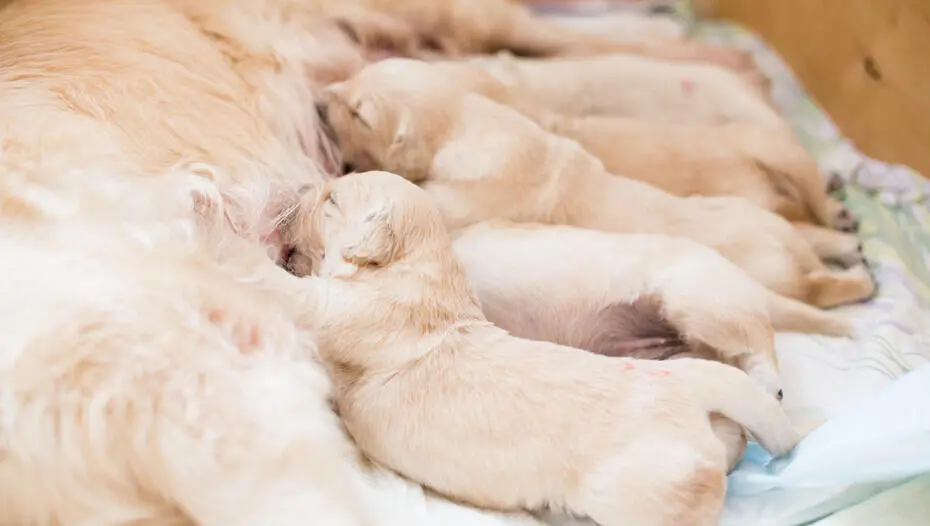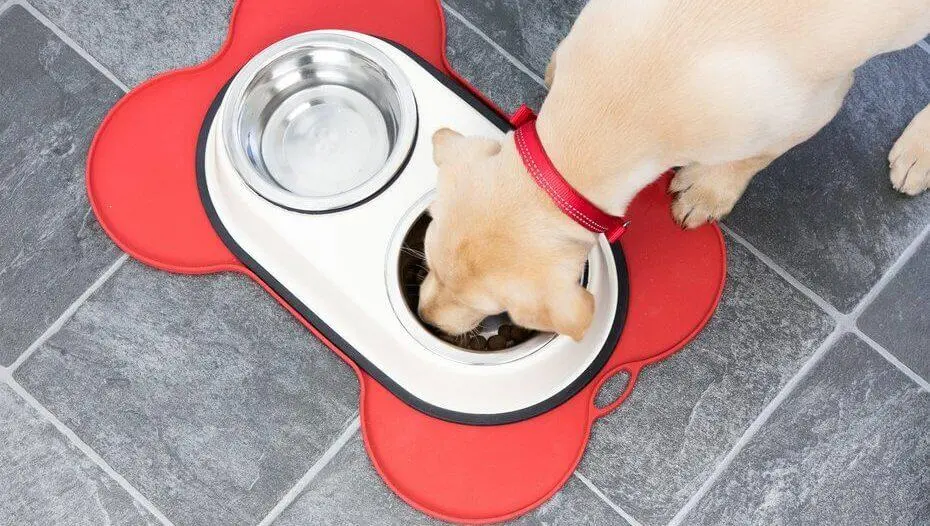
When did you decide it was time to start weaning your puppy? To ease their transition from their mother’s milk to puppy chow, follow these steps.
An essential element of your puppy’s growth is the weaning process. Weaning your puppy implies they transition from just consuming their mother’s milk to eating solid meals.
Natural maternal instincts often kick in between birth and the time a puppy is weaned. When the pups are small, she should assist them in learning to suckle and gradually introduce them to the puppy diet. In contrast, if your female is having difficulty nursing her pups, you should see your veterinarian for guidance since this may be a sign of a more serious health issue, such as mastitis.
Learn when to start weaning your puppy, how to encourage healthy eating habits, and more by reading on!
Existence prior to puppy weaning
For the first eight weeks of their lives, puppies should remain with their mothers and littermates. They will thrive on either their mother’s milk or a puppy milk formula for the first few weeks of their lives. Your puppy’s inclination to suckle from its mother’s teats will be aided at first by its keen sense of scent.
The mother’s body heat is used to keep the pups warm at this time. They huddle close to compensating for the loss of the mother’s body heat when she leaves for a short time. She’ll lick the pups clean and encourage them to urinate and defecate by doing so.
Human touch is also crucial in these early stages, however, it’s necessary to strike a balance so as not to upset the mother.
When should you wean puppies?

Puppies are typically weaned between the ages of 4 and 8 weeks. At first, in addition to nursing from their mothers, puppies will also experiment with soft puppy food.
Kibble is introduced later, albeit it’s usually moist at first. When weaning is complete, the puppy will no longer need breast milk and will be able to eliminate it on its own. The size of the litter may influence the breeder’s preferred weaning schedule.
Weaning Your Puppy
Food for weaning a puppy should be offered slowly, in very little quantities at first. Puppy food formulated for their age is the best option. Puppies benefit from seeing their mother’s eating habits, and it’s not uncommon for the mother to be eating puppy food herself to supplement her own nutrition. A good indicator that puppies are ready to be weaned is when they begin to try bits of their mother’s food.
Start introducing the pups to soft, wet puppy food at the age of three or four weeks, or soften dry puppy food with hot water, mix it up, and chill it to body temperature for supper. Keep the food in a shallow, broad dish so it can easily get to it. Puppies often get into their food bowls to investigate, making a big mess in the process. Get ready to clean up the mess they make!
At this point, the pups no longer need their mother’s milk for hydration and nourishment, so you may start giving them access to a small dish of fresh water.
The pups could be wary at first, but they’ll learn to love the new tastes by imitating their mother. Because of their small tummies, many little meals are recommended. The frequency of feedings may be reduced and the total quantity of food consumed can be raised with time, as per the guidelines for feeding.
If you want, you may wean your puppy off of wet or softened food and onto dry food by gradually reducing the amount of water added to his or her bowl.
The challenge of weaning stray pups
Pups that are abandoned as puppies need a lot of care and attention. Up until they are around 3–4 weeks old, they should be provided a puppy milk replacer.

You may ease them into eating dry food by mixing it with warm water. Be patient and give the puppy a chance to adjust to the new food before you try to wean it off the bottle.
Tips for weaning puppies successfully
If you’re new to puppy weaning, here are a few handy tips that will help both pets and owners get through this sensitive time together:
It’s okay if things are a little chaotic
Milk and wet food might fly in every direction during the weaning process of a puppy. Some pups may think it’s fun to play with their meals. They need to try the new food, even if it means getting their paws soiled.
Blend it up
You may also use a blender in the outset to get a silky smooth consistency. Dry kibble may be reconstituted into a softer consistency for the puppy by first mashing it up with warm water, and then gradually mashing it less and less until the kibble form stays intact but soft, and then feeding it to the puppy. Your new puppy may already be used to dry kibble by the time they come at your house, depending on the breed and the sort of food you’ve been feeding them.
Eat and drink from heavier dishes.
Clumsy and active, puppies are likely to knock over weak dishes in their eagerness to sample novel foods. Make sure the dish is substantial enough to stay there and not so deep that a little puppy may drown if it fell in.
Do not overfeed
It’s easy to overfeed your puppy since you feel bad about wasting food. When weaning a puppy, less frequent, smaller meals are preferable.
Check that everyone receives their fair portion
More than one dish of food should be provided in a large litter or one with a significant size disparity among the puppies. Puppies should be weighed every day to make sure they are getting enough to eat and developing normally.
Next, learn how early and consistent socialization may shape your puppy into a confident and outgoing adult dog. Moreover, we have compiled a useful puppy feeding guide to assist you in making the right decision when picking out puppy food.